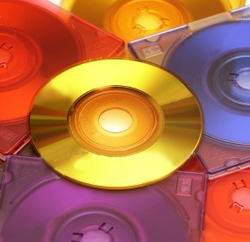Reference. Funny word, that. It implies a higher reality – a benchmark. Truth, reality, purity.
Before I descend further into the metaphysical, we will, as those snooty academics say, contextualize.
For the purposes of this discussion, “reference” refers to source data used to organize the assets of a live sound system in such a way that the operator stays employed. Not the highest, or purest truth – truth-ish (Stephen Colbert already grabbed “truth-iness”) if you will.
In the audiophile world (tubes, panel loudspeakers, fancy isolators, pricey cables – and, oh yeah, far better sound) equipment tagged as “reference” will usually make you poor, but happy. Not always, as some vendors slap the “R” word on schlock equipment that has the price tag but not the performance.
Audiophile equipment and media reviewers often refer to their favorite discs as “reference.” The better reviewers will tell you the limits of the disc within that construct.
Some discs (or files) help you sort out main loudspeaker positioning, tilt, cabling, isolation or listening angle. Some are good for subwoofer positioning, polarity (usually variable polarity, not just plus/minus), and high-pass adjustment.
Reference discs with enormous bandwidth, dynamic range, and textural complexity (Michael Tilson-Thomas’ disc with the San Francisco Symphony of the Mahler 2 is my current favorite) will reveal what’s really going on with your preamps and power amplification.
If my main left/right (MTT’s Mahler 2 is a multi-layer SACD – it also has a monster multi-channel mix, but that is a different discussion) folds up on the peaks of that disc (doesn’t resolve the enormous bass, gets harsh on the big brass hits, compresses and sounds small on the really loud moments), something ain’t right.
Maybe the amp is too small for the loudspeakers, or the loudspeakers are too inefficient, or the preamp power supply is a toy and not up to it, etc.
However, if I just want to assess my system with respect to low frequency tonality (low-pass 125 Hz), I go to Duke Ellington’s “Jazz Party” or Art Pepper’s “+ 11.” The string basses on those albums will tell me a ton about the LF resolving power of my system. Not just how loud, or how extended the LF is, but how real, how musical.
Yet those discs will not tell the whole low frequency tale – they miss the animal part, the grunt needed to resolve more aggressive musical forms. The AC/DC remaster “Who Made Who,” specifically cut 9, “For Those About to Rock (We Salute You),” is the current champ of that.
For voice – Sinatra (“What Is This Thing Called Love”), the Allison Krause/Robert Plant disc “Raising Sand,” or Lyle Lovett’s “Joshua Judges Ruth “(props to Angelo Arcuri for that one). My various reference discs change from time to time – after a while you get sick of playing the same thing over and over.





















